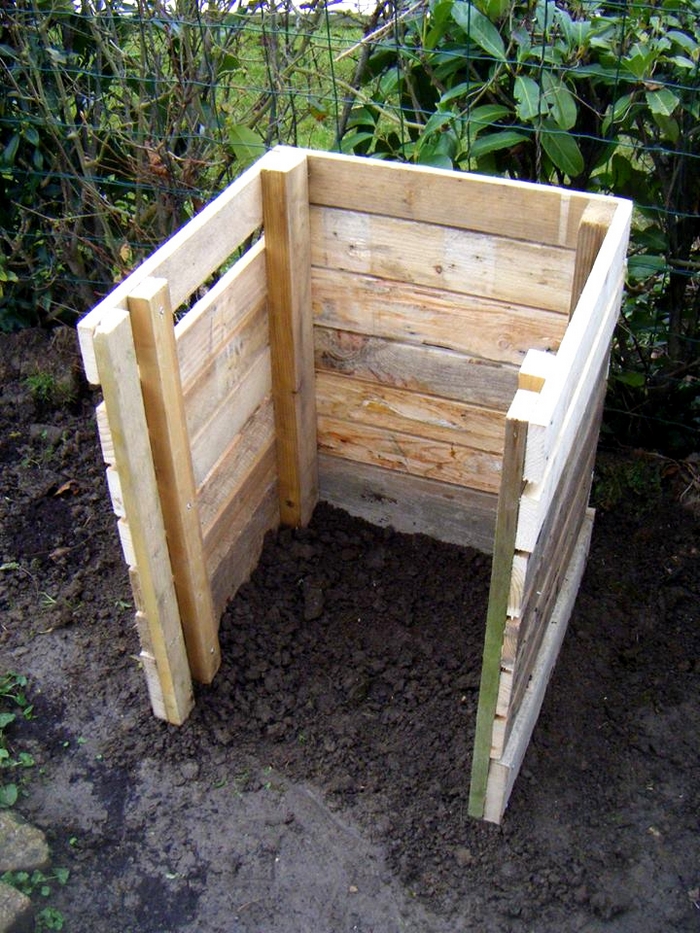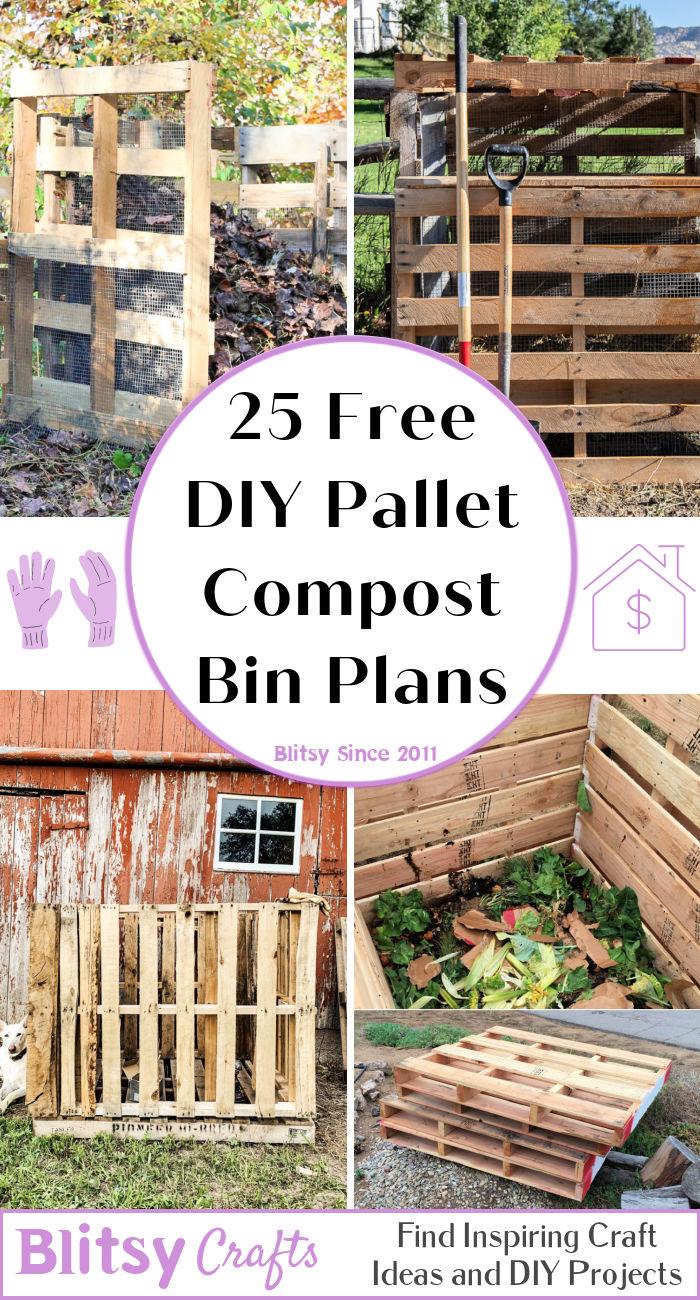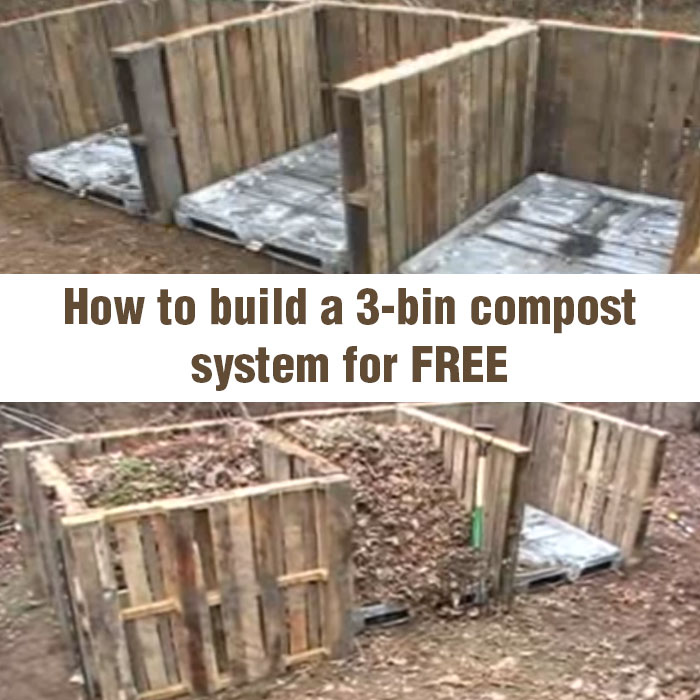The Benefits of Composting with Pallets
Composting is a simple and effective way to reduce waste, create nutrient-rich soil, and support a healthy environment. One of the most cost-effective and sustainable ways to compost is by building a compost bin from pallets. This approach not only reduces waste but also provides a unique opportunity to upcycle and repurpose materials that would otherwise end up in landfills.
Building a compost bin from pallets offers several advantages. Firstly, it is an environmentally friendly option that reduces the need for single-use plastics and other materials. Secondly, it is a cost-effective solution that can be built using readily available materials. Finally, it provides a creative outlet for individuals to design and build their own composting system.
Composting with pallets also offers several benefits for gardeners and environmentally conscious individuals. By creating a nutrient-rich soil amendment, composting can help to improve soil structure, increase crop yields, and support healthy plant growth. Additionally, composting can help to reduce greenhouse gas emissions, mitigate climate change, and promote sustainable agriculture practices.
When building a compost bin from pallets, it is essential to consider the design and construction of the bin. A well-designed bin should provide adequate ventilation, drainage, and insulation to support the composting process. By incorporating these features, individuals can create a functional and efficient composting system that meets their specific needs and requirements.
In addition to the environmental benefits, building a compost bin from pallets can also be a fun and rewarding DIY project. By upcycling and repurposing materials, individuals can create a unique and functional composting system that reflects their creativity and resourcefulness.
Overall, building a compost bin from pallets is a simple, cost-effective, and sustainable way to reduce waste, create nutrient-rich soil, and support a healthy environment. By incorporating this approach into their daily lives, individuals can make a positive impact on the environment while also promoting sustainable agriculture practices.
Gathering Materials: What You Need to Get Started
To build a pallet compost bin, you will need a few essential materials. The most critical component is, of course, the pallets themselves. You can source pallets from a variety of locations, including local businesses, online marketplaces, or even your own backyard. Look for pallets that are sturdy, clean, and free of any contaminants.
In addition to pallets, you will also need some wire, screws, and a drill to assemble the bin. The wire will be used to create a mesh screen for ventilation and to keep pests out, while the screws will be used to secure the pallets together. A drill will be necessary for drilling holes for the screws and for making any necessary adjustments to the pallets.
Other materials you may want to consider include a lid or door for the bin, as well as some weather-resistant wood glue to seal any gaps or cracks. You may also want to add some decorative elements, such as a coat of paint or some natural materials like bamboo or straw.
When preparing your pallets for use, make sure to clean them thoroughly and remove any debris or contaminants. You may also want to disassemble the pallets and remove any nails or screws that could interfere with the composting process.
Here is a list of the materials you will need to build a pallet compost bin:
- Pallets (4-6)
- Wire mesh screen
- Screws
- Drill
- Weather-resistant wood glue
- Lid or door (optional)
- Decorative elements (optional)
With these materials in hand, you will be ready to start building your pallet compost bin and begin turning trash into treasure.
Designing Your Pallet Compost Bin: Considerations and Ideas
When designing a pallet compost bin, there are several considerations to keep in mind. The size and shape of the bin will depend on the space available and the amount of compost you plan to produce. A larger bin will require more pallets and materials, but will also provide more space for composting.
One of the most important considerations is ventilation. Compost needs oxygen to break down, so it’s essential to include some form of ventilation in your design. This can be achieved by adding wire mesh or perforated metal to the sides or top of the bin.
Another consideration is drainage. Compost can be wet and soggy, so it’s essential to include some form of drainage in your design. This can be achieved by adding a layer of gravel or sand at the bottom of the bin, or by including a drainage pipe.
When it comes to customizing your pallet compost bin, the possibilities are endless. You can add a lid or door to make it easier to access the compost, or include a turning mechanism to make it easier to mix the compost.
Here are some ideas for customizing your pallet compost bin:
- Add a trellis or arbor to provide shade and support for climbing plants
- Include a worm composter or vermicomposting system
- Add a rainwater harvesting system to collect and store rainwater for irrigation
- Use natural materials like bamboo or straw to create a decorative exterior
- Include a compost tea brewer to create a nutrient-rich liquid fertilizer
By considering these factors and incorporating your own creative ideas, you can design a pallet compost bin that meets your specific needs and provides a functional and efficient composting system.
Some popular designs for pallet compost bins include:
- The “pallet box” design, which uses pallets to create a rectangular box with a lid
- The “pallet tower” design, which uses pallets to create a vertical tower with multiple compartments
- The “pallet worm composter” design, which uses pallets to create a worm composter with multiple trays
These designs can be modified and customized to fit your specific needs and space constraints.
Building Your Pallet Compost Bin: A Step-by-Step Tutorial
Now that you have gathered all the necessary materials and designed your pallet compost bin, it’s time to start building. Follow these step-by-step instructions to create a functional and efficient composting system.
Step 1: Assemble the Pallets
Begin by assembling the pallets into a rectangular shape. Use screws to secure the pallets together, making sure to leave enough space for ventilation and drainage.
Step 2: Add Wire Mesh
Cut a piece of wire mesh to fit around the pallets, leaving enough excess to fold over the edges. Use wire to secure the mesh to the pallets, making sure to leave enough space for air to circulate.
Step 3: Attach a Lid
Cut a piece of plywood or oriented strand board (OSB) to fit on top of the pallets. Attach the lid using hinges and a latch, making sure it is secure and easy to open.
Step 4: Add a Door
Cut a piece of plywood or OSB to fit on one side of the pallets. Attach the door using hinges and a latch, making sure it is secure and easy to open.
Step 5: Add a Turning Mechanism
Cut a piece of wood or metal to fit inside the pallets, creating a turning mechanism. This will make it easy to mix the compost and aerate the pile.
Step 6: Add a Drainage System
Cut a piece of PVC pipe or a drainage hose to fit at the bottom of the pallets. Attach the pipe or hose to the pallets, making sure it is secure and functional.
Step 7: Finish and Inspect
Finish the pallet compost bin by adding any final touches, such as a coat of paint or a layer of mulch. Inspect the bin to make sure it is secure, functional, and ready for use.
By following these steps, you can create a pallet compost bin that is functional, efficient, and easy to use. Remember to maintain your compost bin regularly to ensure a healthy and thriving composting process.
Tips for Maintaining Your Pallet Compost Bin
Now that you have built your pallet compost bin, it’s essential to maintain a healthy composting process. Here are some tips to help you keep your compost bin thriving:
Adding Materials:
When adding materials to your compost bin, make sure to include a mix of “green” and “brown” materials. Green materials, such as food scraps and grass clippings, are high in nitrogen and will help to speed up the composting process. Brown materials, such as dried leaves and shredded newspaper, are high in carbon and will help to balance out the nitrogen levels.
Managing Moisture:
Compost needs to be kept moist, but not waterlogged. Aim for a consistency like a damp sponge. If the compost is too dry, it will not break down properly, and if it’s too wet, it will become anaerobic and start to smell.
Monitoring Temperature:
Compost piles can get hot, with temperatures reaching up to 160°F (71°C). Check the temperature of your compost pile regularly, and turn it if it gets too hot. This will help to prevent the growth of pathogens and ensure that the compost is safe to use.
Turning the Compost:
Turning the compost regularly will help to aerate the pile and speed up the composting process. Use a pitchfork or shovel to turn the compost, and make sure to break up any clumps or mats that form.
Monitoring Pests:
Compost piles can attract pests, such as rodents and flies. Monitor your compost pile regularly, and take steps to prevent pests from becoming a problem. This can include adding a lid to the compost bin, using diatomaceous earth to repel insects, or setting up a pest trap.
Using the Compost:
Once the compost is finished, it’s ready to use. Use it to fertilize your plants, improve soil structure, and support healthy microbial activity.
By following these tips, you can maintain a healthy and thriving composting process, and enjoy the many benefits of composting with your pallet compost bin.
Common Mistakes to Avoid When Building a Pallet Compost Bin
When building a pallet compost bin, there are several common mistakes to avoid. These mistakes can lead to poor composting performance, unpleasant odors, and even pest infestations. Here are some common mistakes to avoid when building a pallet compost bin:
Poor Ventilation:
One of the most common mistakes is poor ventilation. Compost needs oxygen to break down, so it’s essential to include adequate ventilation in your pallet compost bin. Make sure to add wire mesh or perforated metal to the sides and top of the bin to allow for airflow.
Inadequate Drainage:
Another common mistake is inadequate drainage. Compost can be wet and soggy, so it’s essential to include a drainage system in your pallet compost bin. Add a layer of gravel or sand at the bottom of the bin, and make sure the bin is elevated to allow for proper drainage.
Insufficient Maintenance:
Insufficient maintenance is another common mistake. Compost needs to be turned regularly to aerate the pile and speed up the composting process. Make sure to turn the compost every week or two, and add new materials as needed.
Incorrect Materials:
Using incorrect materials is another common mistake. Make sure to use only organic materials, such as food scraps, leaves, and grass clippings. Avoid adding plastics, metals, and other non-organic materials, as they can contaminate the compost and create unpleasant odors.
Incorrect Size:
Building a pallet compost bin that is too small or too large is another common mistake. Make sure to build a bin that is the right size for your needs, and consider adding multiple bins if you have a large amount of compost materials.
By avoiding these common mistakes, you can build a pallet compost bin that is functional, efficient, and effective. Remember to always follow best practices for composting, and happy composting!
Getting Creative with Your Pallet Compost Bin: Ideas for Decoration and Integration
Now that you have built your pallet compost bin, it’s time to get creative and integrate it into your garden or yard. Here are some ideas for decorating and integrating your pallet compost bin:
Add Plants:
Adding plants around your pallet compost bin can help to create a natural and beautiful landscape. Consider adding flowers, herbs, or vegetables that will thrive in the nutrient-rich soil created by your compost bin.
Use Natural Materials:
Using natural materials such as wood, stone, or bamboo can help to create a cohesive and natural look for your pallet compost bin. Consider adding a wooden lid or a stone base to your bin.
Incorporate into Outdoor Design:
Your pallet compost bin can be a functional and attractive addition to your outdoor design. Consider incorporating it into a garden bed, a patio, or a deck.
Add a Trellis:
Adding a trellis to your pallet compost bin can help to create a beautiful and functional space. Consider adding a trellis for climbing plants such as peas, beans, or cucumbers.
Use as a Planter:
Your pallet compost bin can also be used as a planter for small plants or herbs. Consider adding a layer of soil and plants to the top of your bin.
Get Creative with Paint:
Adding a coat of paint to your pallet compost bin can help to create a unique and personalized look. Consider using natural paints such as milk paint or chalk paint.
By getting creative with your pallet compost bin, you can create a functional and beautiful addition to your garden or yard. Remember to always follow best practices for composting and maintenance to ensure a healthy and thriving composting process.
Conclusion: Start Composting with Your Pallet Bin Today
Building a pallet compost bin is a simple and effective way to reduce waste, create nutrient-rich soil, and support a healthy environment. By following the steps outlined in this article, you can create a functional and attractive compost bin that will help you to achieve your composting goals.
Remember to always follow best practices for composting, including adding a mix of “green” and “brown” materials, managing moisture, and monitoring temperature. By doing so, you can create a healthy and thriving composting process that will provide you with a steady supply of nutrient-rich soil.
Don’t be afraid to get creative with your pallet compost bin, and consider adding plants, using natural materials, and incorporating the bin into your outdoor design. With a little bit of imagination and effort, you can create a beautiful and functional compost bin that will enhance your garden or yard.
So why not start composting with your pallet bin today? With the benefits of composting, including reduced waste, nutrient-rich soil, and a healthy environment, there’s no reason to wait. Gather your materials, follow the steps outlined in this article, and start creating your own pallet compost bin.
Happy composting!






